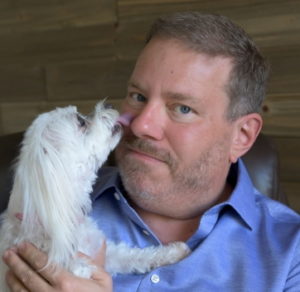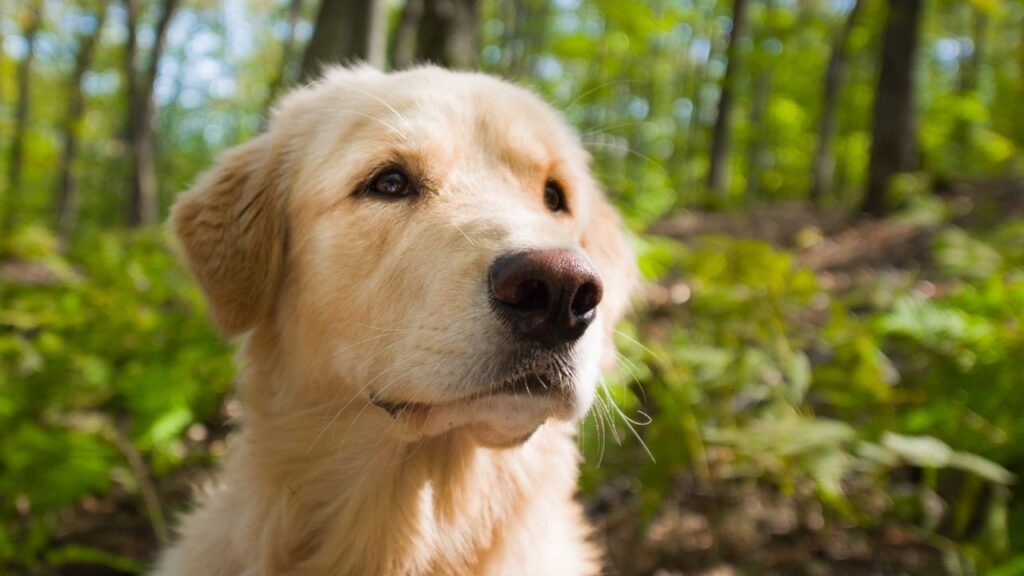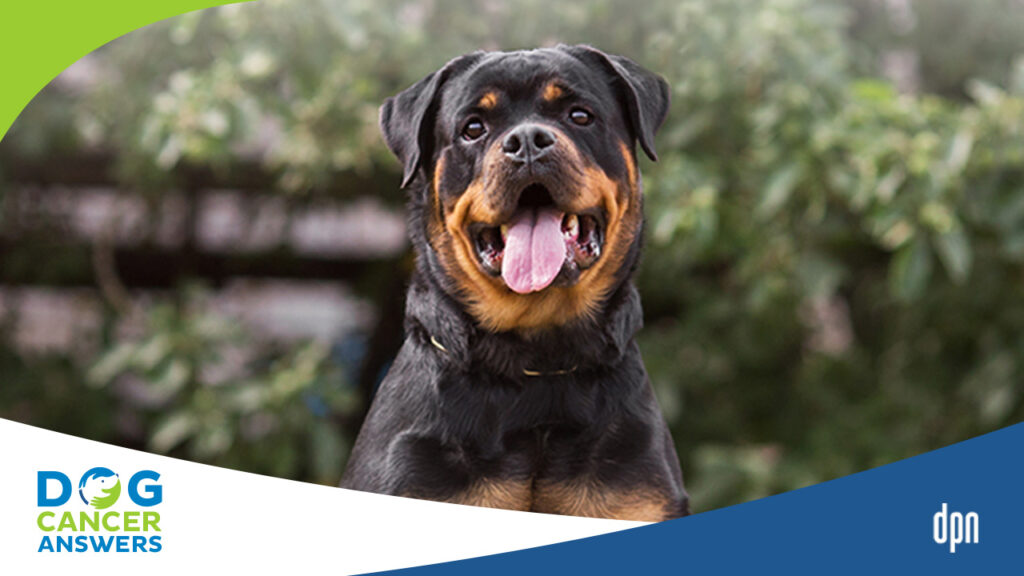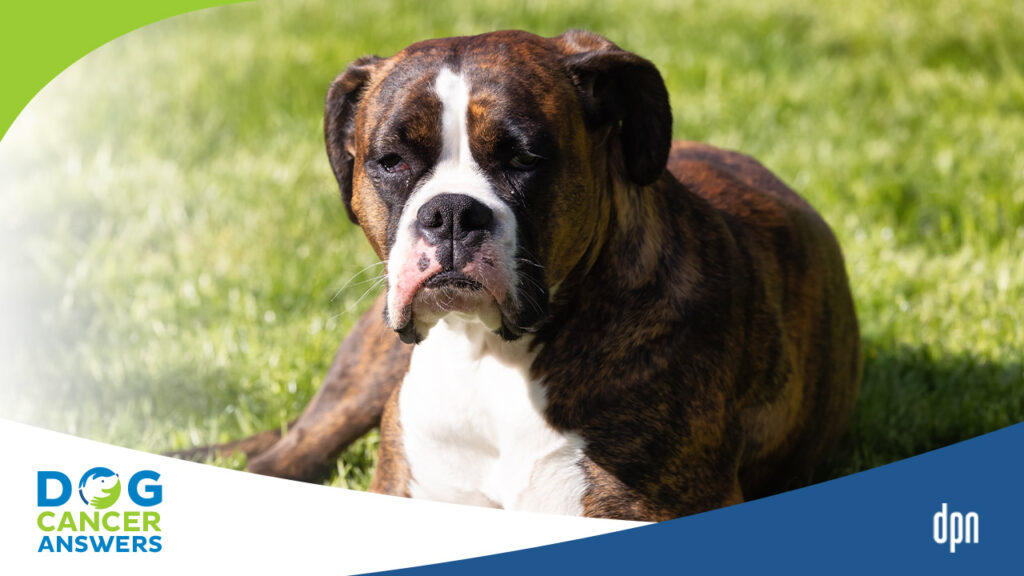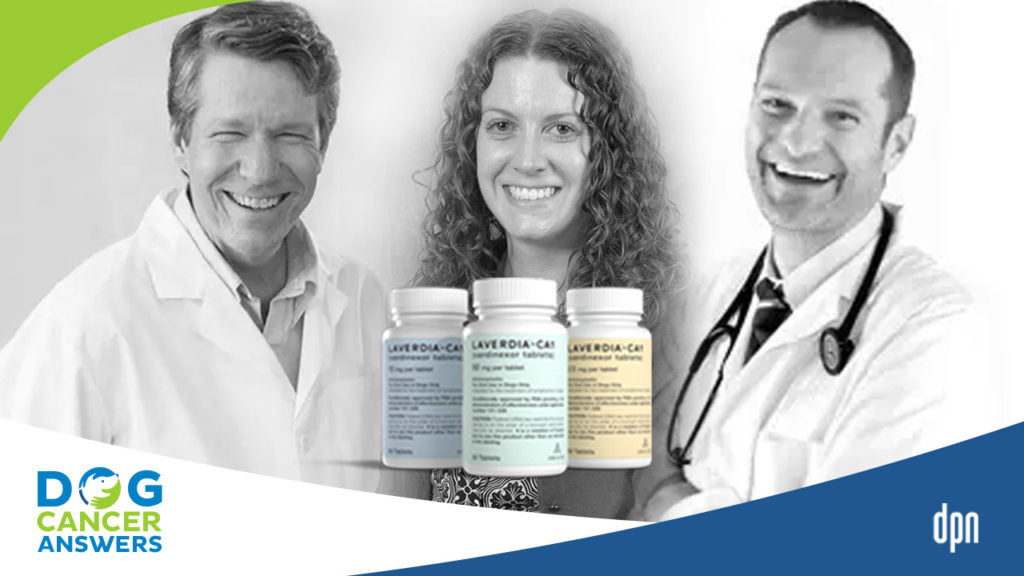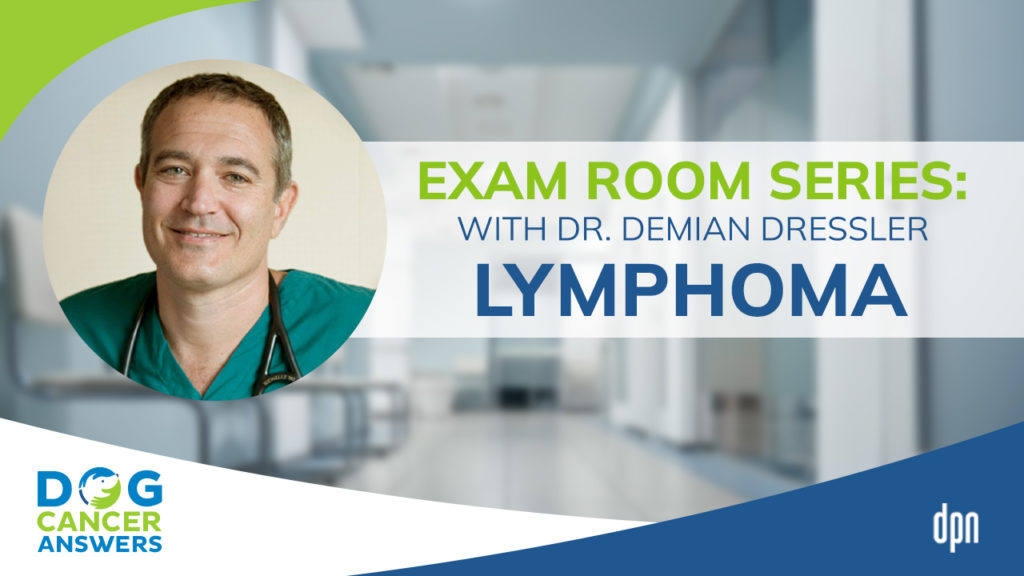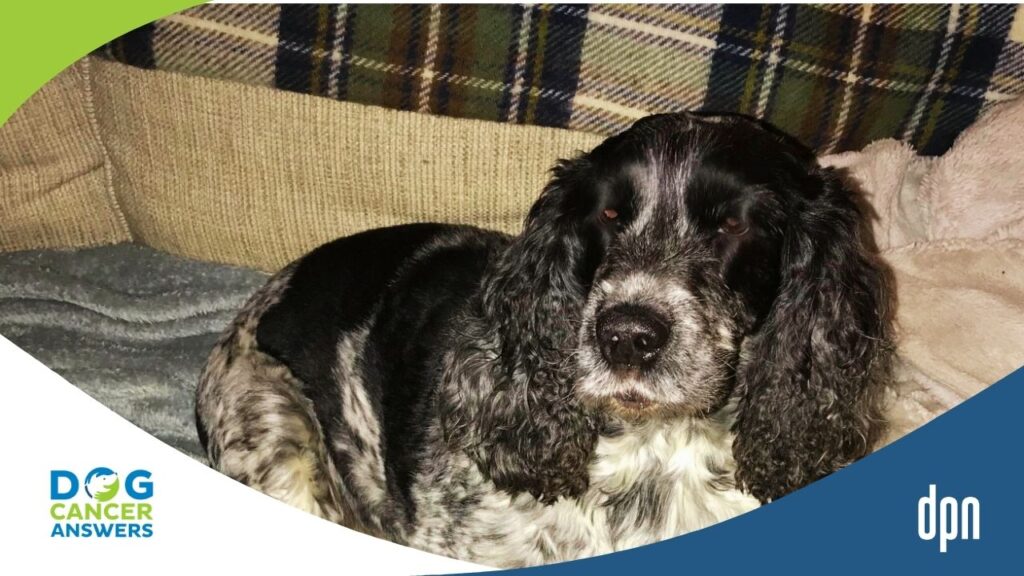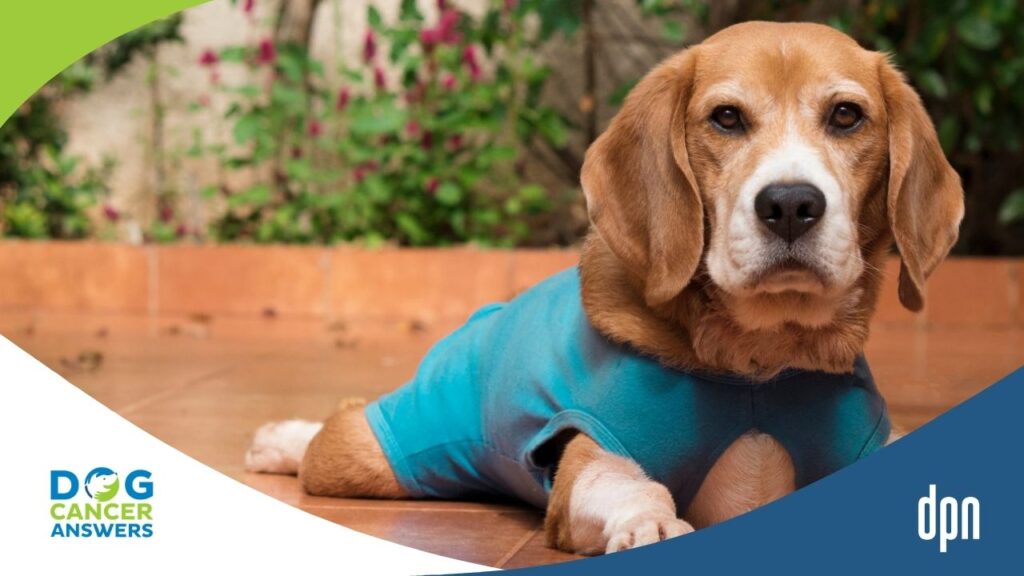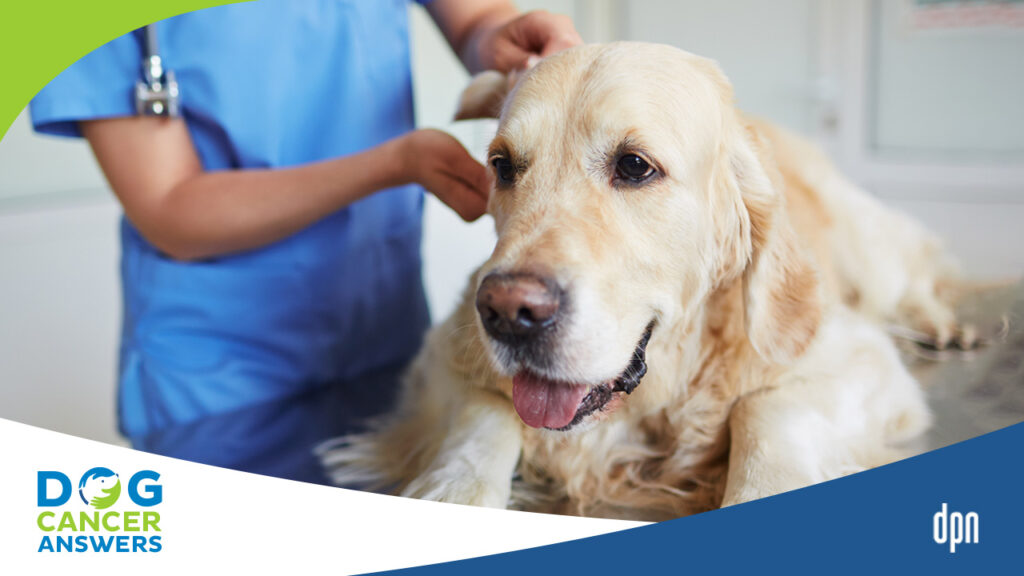>> Dr. Megan Duffy: [00:00:00] So it’s definitely a thing that’s out there, it’s real, it’s happening in the world. The thing we don’t know yet is the best way to do it.
>> Announcer: Welcome to Dog Cancer Answers, where we help you help your dog with cancer.
>> Molly Jacobson: Hello dog lover, I’m Molly Jacobson, I’m the Editor in Chief at DogCancer.com, where we give you better information about dog cancer today, so you have no regrets tomorrow.
Today’s episode is a listener line call where we built an entire show around a question from a listener or a watcher, just like you. We’ve done these shows for years and we want to do more of them, which is why I want to give you a website to go to DogCancer.com/ask.
We want to hear your questions about dog cancer, any aspect of dog cancer, and we also want to hear your stories. If [00:01:00] you’ve got a dog cancer story that can bring hope and healing to other people who are facing dog cancer, we want to hear it. That’s why you should head over to DogCancer.com/ask. and use the form to submit your own video question, hopefully with your dog if you can.
Tell your own story or share your own question about dog cancer, or ask a question like the one Mariana asked for this show. We’ll do our research, we’ll talk to experts, and we’ll build a show around your question if we think it will hold value for other people. And if your story inspires and uplifts, we’ll make that one too.
The reason I’m asking for your help with this type of show is because I know for a fact that these shows have an impact long after they’re made. There are shows that are still helping dogs today that we made 5, 6, 7, 8, 9, 10 [00:02:00] years ago. Your voice really matters to our community. There are dogs not yet born who will benefit from the questions and stories that you share today. So go to DogCancer.com/ask and submit your video. You can do that anytime.
Now let’s turn our attention to Mariana and her question about using T-cell infusions to treat her dog Joya, a Pomeranian, after Joya finishes up her CHOP protocol for lymphoma. Is this a good idea? Well, our veterinary expert for this show is veterinary oncologist, Dr. Megan Duffy, a return expert. who’s just phenomenal and speaks in plain language and everyday words so that we can all understand exactly what she’s saying. And she had a whole bunch of insights into why T-cell infusions might be a valid idea, but maybe not appropriate for Joya. A lot of [00:03:00] factors depend.
For example, T-cell infusions are very interesting treatment. and valid to explore, but it’s not today a routine approach to treating cancer because they’re still working some things out. They’re working on how to apply it, whether it works better for B-cell or T-cell lymphoma, when to use it with chemotherapy.
Do you use it before? Do you use it during? Or do you use it after chemotherapy is finished? And how big does a dog need to be in order to do this treatment? This treatment involves literally harvesting blood from your dog. So a small dog has less blood and depending on how much blood is needed in order to make the infusion that’s then later delivered back into the dog.
You might not actually have enough blood supply on hand in your dog. So there’s a lot of things to think about and I think it’s a really interesting conversation. Let’s go to it now. It’s a [00:04:00] conversation James Jacobson had with Dr. Megan Duffy about T-cell lymphoma. I’ll see you at the other side.
>> James Jacobson: Dr. Megan Duffy, thank you so much for being with us again on Dog Cancer Answers.
>> Dr. Megan Duffy: Oh, it’s always a pleasure. How can I help?
>> James Jacobson: So, we have a listener call today about T-cell infusion. Let’s hear it and then we’ll go to you for some comments.
>> Mariana Diaz: Hi. My name is Mariana Diaz, and I’m calling from Washington, D. C. My dog’s name is Joya, and she has lymphoma. She was diagnosed back in November, and she has almost completed her CHOP protocol, just one more therapy left. She has been in remission since the second treatment, and now we’re looking into T-cell infusion.
So, my question is whether or not you recommend T-cell infusion for lymphoma on dogs, specifically she’s a Pomeranian and we have read a lot about T-cell infusion to [00:05:00] help dogs continue to fight the cancer and not relapse, so we’re curious whether or not to explore that.
Thank you.
>> James Jacobson: So, Dr. Duffy, what do you have for Mariana?
>> Dr. Megan Duffy: That’s really interesting. You know, as far as using the body’s own cells to fight cancer, it is a very valid, you know, thing to think about. And in people, those T-cell infusions have been used in a couple of different tumor types to help kind of sustain that response against the cancer itself.
And what we know about T-cell infusions in dogs and in general is that essentially, we take your own healthy T-cells, collect them, select specific T-cells, grow them up in a lab, kind of prime them to find the cells of interest, and then give them back to the dog. And there are some things we need to think about because, of course, you gotta have functional T-cells, so this is for B-cell [00:06:00] lymphoma more so than T-cell lymphoma, at least right now.
Gotta have a dog that’s big enough that they won’t mind that we remove quite a bit of their blood to harvest those T-cells.
>> James Jacobson: Talk about that How do you harvest T-cells from Rover?
>> Dr. Megan Duffy: So this is mostly going to be removing quite a bit of blood that’s then shipped off to a lab and I worry about that in a little pomeranian that this is still experimental but most of the studies using this kind of therapy are asking for dogs that are at least maybe 30 pounds or so so that taking that blood sample is okay, so it’s definitely a thing that’s out there.
It’s real, it’s happening in the world. The thing we don’t know yet is the best way to do it. So the optimizing, the, do we do this again before chemo, after chemo, during chemo? Do we do it when they relapse? How much time does it take? What are the results that we’re seeing? We don’t quite have that yet and it doesn’t mean that we shouldn’t think about it, but [00:07:00] I think it’s definitely worth, you know, having Mariana ask her oncologist, Hey, what is going to be the best way to do this?
Is my dog a good candidate? How does all of that work? Because you know, the science is definitely valid and preliminarily there are some really good things here, but we don’t quite have all the answers yet.
>> Molly Jacobson: Okay, let’s pause here to listen to our sponsors, and we’ll be right back with more from Dr. Megan Duffy on T-cell infusions.
And we’re back with James Jacobson’s conversation with Dr. Megan Duffy,
>> James Jacobson: so Have you ever used this T-cell harvesting?
>> Dr. Megan Duffy: I haven’t.
>> James Jacobson: Okay, so it is kind of really experimental.
>> Dr. Megan Duffy: Definitely.
>> James Jacobson: And so like when you said it’s better for a big dog It makes me think like what is the actual process and how much blood is needed?
>> Dr. Megan Duffy: Oftentimes for something like this, it’s, it’s enough blood that maybe they might need, you know, 20 mils or [00:08:00] 30 mils of blood. And if you think about the amount of blood that’s drawn for your average CBC or something like that, which might be one mil or two mils that, you know, that volume for a little tiny creature is sometimes not the best situation.
And so a lot of it depends on the lab, what they need specifically and that that may change over time as well. But it’s a consideration if you’ve got a two pound dog versus a hundred pound dog, just very different blood volumes.
>> James Jacobson: So they draw it out. It’s not, I have this idea that, oh, they hook them up to a machine and the blood keeps circulating out and it strips the T-cells. No, you literally just need to send the blood to a lab and the dog does not have that blood anymore.
>> Dr. Megan Duffy: At least how things are, are being done preliminarily. It is a lot of pulling whole blood.
>> James Jacobson: Okay.
>> Dr. Megan Duffy: Um, you know, when we get into, you know, really filtering the dog’s entire bloodstream, kind of like using apheresis and bone marrow transplant, which is another question unto itself, then they are [00:09:00] hooked up to a machine that filters their blood.
>> James Jacobson: Okay. So that’s what I was envisioning. Okay. So that does sound like it.
>> Dr. Megan Duffy: Yeah.
>> James Jacobson: And how new is this concept? You know, is this something that you guys talk about at those oncology conferences or is this like so cutting edge, it’s just way out there in the future?
>> Dr. Megan Duffy: This is new enough that I know there are some private company is trying to get it off the ground commercially, but for the most part, it’s still in the realm of clinical trials, small groups of dogs trying to get data together to figure out how best do we use this?
So it’s not quite ready to say this is how we’re going to change lymphoma treatment. This is the best way to use it. It’s still, it’s still in the early stages.
>> James Jacobson: And I can’t help but, but think when I hear or learn about new things like this that are being used in veterinary cancer that these are companies behind it that are trying to, you know, like, get some data in veterinary use and then apply it to human medicine. Is [00:10:00] that what you think when you see that as well?
>> Dr. Megan Duffy: There’s definitely a lot more data in people, believe it or not, but there’s also a lot more funding in people to get this off the ground.
>> James Jacobson: Yeah, well, it’s an expeditious way to get some results that could maybe then be transferred as proof of concept to people. That’s interesting. So in terms of Mariana’s case and the size of her dog, probably not something that you would recommend at this point.
>> Dr. Megan Duffy: I think it might be tough unless they have ways of getting around how much blood they need for samples and things like that. But still always worth asking because the technology is changing
>> James Jacobson: Well, thank you so much, Dr. Duffy, and thank you, Mariana, for your call. If you, a listener, a viewer, are interested and would like to ask a question for one of our veterinarians, get in touch with us at Dog Cancer Answers. The number is on your screen or in today’s show notes.
Thank you again, Dr. Duffy, for being with us.
>> Dr. Megan Duffy: Thank you.
>> Molly Jacobson: And thank you listener. I hope you found this conversation helpful and I [00:11:00] hope that if you have a question or a story to share, you will go to DogCancer.com/ask and submit it so we can build a show around it.
And hey, here’s an idea. Why not ask a question you had at the beginning of your cancer journey? Something you know now you wish you knew back then. Sometimes those questions make the best shows because your question comes from deep experience and can really help people who are newly in shock about their dog’s cancer.
Thanks again. I’m Molly Jacobson, and for all of us here at Dog Podcast Network, I’m wishing you and your dog a very warm aloha.
>> Announcer: Thank you for listening to Dog Cancer Answers. If you’d like to connect, please visit our website. at DogCancer.com or call our listener line at (808) 868-3200. And here’s a friendly reminder that you probably already know this podcast is provided for [00:12:00] informational and educational purposes only. It’s not meant to take the place of the advice you receive from your dog’s veterinarian.
Only veterinarians who examine your dog can give you veterinary advice or diagnose your dog’s medical condition. Your reliance on the information you hear on this podcast is solely at your own risk. If your dog has a specific health problem, contact your veterinarian. Also, please keep in mind that veterinary information can change rapidly, therefore, some information may be out of date.
Dog Cancer Answers is a presentation of Maui Media in association with Dog Podcast Network.

